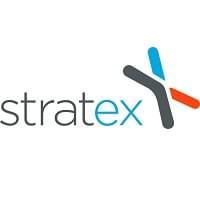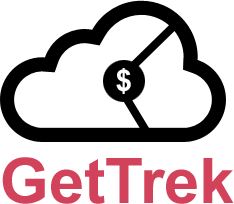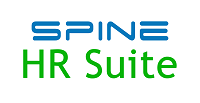Description

Payroo Payroll

Stratex
Comprehensive Overview: Payroo Payroll vs Stratex
Payroo Payroll and Stratex are both software solutions designed to assist businesses in managing various aspects of their operations, with a particular emphasis on payroll and strategic performance management, respectively. Here's a detailed overview of each:
Payroo Payroll
a) Primary Functions and Target Markets:
- Primary Functions: Payroo Payroll is a cloud-based payroll software that handles various aspects of payroll management. Its primary functions include processing payroll, managing auto-enrollments for pensions, submitting real-time information (RTI) submissions to HMRC, managing employee records, and providing payslip generation.
- Target Markets: Payroo primarily targets small to medium-sized businesses (SMEs) in the UK, given the specific compliance with UK payroll and tax regulations. It is particularly appealing to businesses seeking a cost-effective, straightforward, and reliable payroll solution without the complexity that might accompany more comprehensive HR management systems.
b) Comparison in Market Share and User Base:
- Market Share and User Base: In the UK, Payroo is a recognized name among SMEs for their payroll needs due to its simplicity and compliance features. While it doesn't compete directly with major payroll service providers like ADP or Workday in terms of market share, it has carved out a niche by appealing to smaller businesses that need straightforward and cost-efficient solutions. The number of users may not be as high as the big names, but it commands respect and reliability in its target segment.
c) Key Differentiating Factors:
- Cost-Effective Solution: Payroo is often more affordable compared to larger, more comprehensive HR solutions, making it an attractive option for small businesses.
- Focus on UK Compliance: The software is tailored specifically for the UK market, ensuring compliance with UK-specific payroll laws and regulations, which may not be a focus for international systems.
- User-Friendly Interface: Its ease of use and straightforward interface are designed to cater to users who may not have extensive payroll management experience.
Stratex
a) Primary Functions and Target Markets:
- Primary Functions: Stratex is more focused on strategic performance management and risk management. It is designed to help organizations align their strategy execution with risk management and performance monitoring. Stratex offers tools for strategic planning, risk assessment, performance metrics tracking, and ensuring strategic objectives are met while managing potential risks.
- Target Markets: Stratex typically targets larger organizations or sectors that need to integrate risk management with strategic planning. This includes industries such as financial services, healthcare, and any other field where the alignment of strategy and risk is critical.
b) Comparison in Market Share and User Base:
- Market Share and User Base: Stratex, being a niche product, does not have the widespread user base that generic business management tools may have, but it holds a crucial spot in industries that require integrated risk and performance management. The user base is generally represented by medium to large enterprises across critical sectors.
c) Key Differentiating Factors:
- Integration of Risk and Performance: Stratex provides an integrated approach to monitoring risk and strategic performance, a combination not often addressed by standard performance management tools.
- Industry-Specific Solutions: It caters to specific industry needs, providing tailored solutions that align with sector-specific regulatory environments and strategic challenges.
- Advanced Analytics and Reporting: Offers comprehensive analytics capabilities to understand the interplay between strategic objectives and risk, helping organizations make informed decisions.
Conclusion
While Payroo Payroll and Stratex serve different purposes and target different market segments, they both fulfill critical operational needs. Payroo is dedicated to simplifying payroll for small businesses in the UK, ensuring compliance and ease of use, while Stratex focuses on strategic and risk management for larger organizations, providing insights and tools necessary for aligning performance with strategic objectives. Their differences lie mainly in their functionalities, target users, and the specific operational challenges they address.
Contact Info

Year founded :
Not Available
Not Available
Not Available
Not Available
Not Available

Year founded :
2017
Not Available
Not Available
Netherlands
Not Available
Feature Similarity Breakdown: Payroo Payroll, Stratex
To provide a breakdown of the feature similarities for Payroo Payroll and Stratex, I will compare these two payroll and HR management solutions based on the requested categories:
a) Core Features in Common
-
Payroll Management:
- Pay Calculation: Both platforms support automatic pay calculations, including tax deductions, national insurance, and other statutory requirements.
- Compliance: Tools to ensure compliance with local regulations and mandatory reporting to tax authorities.
- Payslip Distribution: Options to generate and distribute payslips electronically to employees.
-
Employee Self-Service:
- Online Access: Both systems offer online portals where employees can access their payslips, tax documents, and other personal information.
-
Reporting and Analytics:
- Standard Reports: Generation of standard payroll and HR reports, like earnings, deductions, and tax summaries.
- Customizable Reports: Some level of customization for specific reporting needs.
-
Integration Capabilities:
- Third-Party Integrations: Both solutions typically offer API access or direct integration with other HR and accounting software.
-
Security and Data Protection:
- Data Encryption: Ensures protection of sensitive financial and personal information.
- User Permissions: Controls to manage what data different users within the organization can access.
b) User Interface Comparison
- Payroo Payroll:
- Generally designed with small to medium-sized businesses in mind, Payroo offers a straightforward, user-friendly interface that simplifies the payroll process. The interface is focused on minimizing the steps required to process payroll, emphasizing clarity and simplicity.
- Stratex:
- While also user-friendly, Stratex typically aims to offer a slightly more customizable and possibly a more complex interface, which might include dashboards tailored to provide strategic HR insights. Its design may cater more towards medium to large enterprises needing more detailed performance and strategic management features alongside payroll.
c) Unique Features
- Payroo Payroll:
- Simplicity for Small Businesses: Highly focused on providing an easy-to-learn platform tailored for small businesses that may not have dedicated HR staff.
- Free Tier: Often provides a free tier for very small companies or those with minimal employees, making it accessible for startups.
- Stratex:
- Strategic HR Features: More advanced HR functions, such as performance management tools, talent management, and analytics for strategic decision-making.
- Customization and Scalability: Typically offers more customization options and scalability, allowing organizations to tailor the software as they grow and as their HR needs become more complex.
In summary, while both Payroo Payroll and Stratex offer robust payroll functionalities, they cater to slightly different audience sizes and needs, with Payroo emphasizing simplicity and accessibility, and Stratex often expanding into more comprehensive HR management tools with strategic insights.
Features

Compliance & Reporting
Employee Management
Payroll Processing

Project Management
Resource Management
Reporting and Analytics
Integration Capabilities
Best Fit Use Cases: Payroo Payroll, Stratex
When considering Payroo Payroll and Stratex, it’s important to understand the specific features and strengths of each platform to determine their best fit use cases. Here’s a detailed look at their ideal applications:
Payroo Payroll
a) Best Fit for Businesses or Projects:
-
Small to Medium Enterprises (SMEs): Payroo Payroll is particularly well-suited for small to medium-sized businesses. These companies benefit from its straightforward, cost-effective, and easy-to-use payroll processing capabilities.
-
Startups and Growing Businesses: Companies in the early and growth stages often choose Payroo for its scalability and ability to handle increasing payroll complexities as the business expands.
-
Businesses Seeking Cloud-Based Solutions: Payroo offers a cloud-based platform, which is ideal for businesses looking for accessible, flexible, and secure payroll processes without investing in dedicated hardware.
-
UK-Based Companies: As a UK-specific solution, Payroo caters well to businesses operating within the UK, ensuring compliance with local payroll laws and regulations.
d) Industry Verticals and Company Sizes:
- Industry Verticals: Payroo is versatile across various sectors, including retail, hospitality, and professional services, where payroll needs are straightforward.
- Company Sizes: Tailored for small to medium-sized companies, particularly those with fewer than 250 employees.
Stratex
b) Preferred Scenarios:
-
Large Enterprises and Corporations: Stratex is often preferred by large organizations that require comprehensive and robust performance management tools, which are usually part of Stratex’s platform offerings alongside payroll.
-
Complex Organizational Structures: Companies with intricate organizational setups benefit from Stratex’s ability to manage and align performance metrics with business objectives and payroll effectively.
-
Businesses Focused on Strategic Management: Stratex excels in scenarios where businesses are not just focused on payroll but also strategic performance management and improvement.
d) Industry Verticals and Company Sizes:
- Industries: Stratex finds its strength in industries like finance, manufacturing, and large corporate firms where performance management is integral to operations.
- Company Sizes: Best suited for mid-sized to large enterprises that require detailed performance metrics along with payroll features.
Conclusion
- Payroo Payroll is best for small to medium-sized UK-based businesses looking for a simple, affordable payroll solution.
- Stratex is optimal for larger organizations and businesses with complex structures requiring strategic performance management alongside payroll capabilities.
Each platform serves different needs based on business size, industry requirements, and the complexity of payroll and performance management needs.
Pricing

Pricing Not Available

Pricing Not Available
Metrics History
Metrics History
Comparing undefined across companies
Conclusion & Final Verdict: Payroo Payroll vs Stratex
To provide a well-rounded conclusion and final verdict for Payroo Payroll and Stratex, let's break down the evaluation based on value, pros, cons, and recommendations.
Conclusion and Final Verdict:
a) Best Overall Value
Considering all factors, Payroo Payroll tends to offer the best overall value for small to medium-sized businesses looking for a cost-effective and user-friendly payroll solution. It excels in simplicity, affordability, and compliance with necessary payroll regulations. However, the best choice ultimately depends on the specific needs of the business in question.
b) Pros and Cons
Payroo Payroll:
Pros:
- Cost-Effective: Often more affordable compared to more extensive payroll systems, making it suitable for small to medium businesses.
- User-Friendly: Simple interface and easy setup process are ideal for businesses without a dedicated payroll specialist.
- Regulatory Compliance: Regular updates ensure compliance with the latest payroll laws and regulations.
- Online Accessibility: Cloud-based platform allows access from anywhere, adding flexibility for remote teams.
Cons:
- Limited Customization: May not offer as much customization or advanced features required by larger enterprises.
- Support Limitations: Some users report limited customer support outside of standard queries.
Stratex:
Pros:
- Comprehensive Features: Includes a wide array of HR management, performance tracking, and strategic tools beyond just payroll processing.
- Scalability: Suitable for businesses that anticipate growth and require more robust HR solutions.
- Enhanced Reporting: Offers a range of reporting options which can be very useful for strategic decision-making.
Cons:
- Higher Cost: Typically more expensive, which might not justify the investment for smaller businesses with basic payroll needs.
- Complex Integration: May require more time and expertise to integrate fully into existing systems.
c) Recommendations
- For Small Businesses: If cost and ease of use are primary concerns and the focus is mainly on payroll processing rather than a broader HR management system, Payroo Payroll is recommended.
- For Growing/Medium to Large Enterprises: Stratex is more suitable for organizations that can benefit from comprehensive HR and strategic management features, alongside payroll processing. It is ideal if the business plans to scale and can absorb the higher costs.
- Evaluate Specific Needs: Businesses should assess their immediate needs, budget, and long-term plans. If a business anticipates needing advanced HR functionalities soon, considering Stratex from the onset could save transition efforts later.
- Trial Periods and Demos: It's wise for prospective users to utilize free trials or demos offered by both platforms to experience firsthand which system aligns better with their operational workflow and requirements.
Ultimately, the decision will hinge on the individual business's priorities regarding complexity, cost, and feature requirements.
Add to compare
Add similar companies




